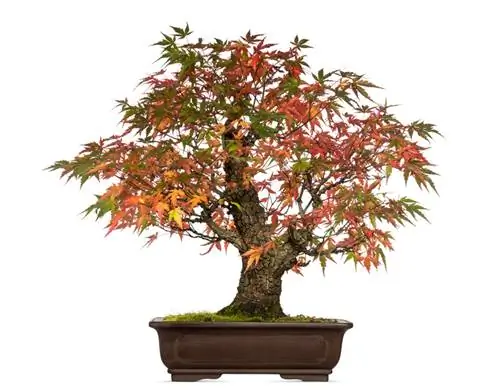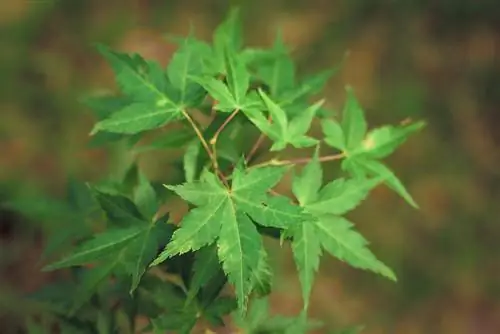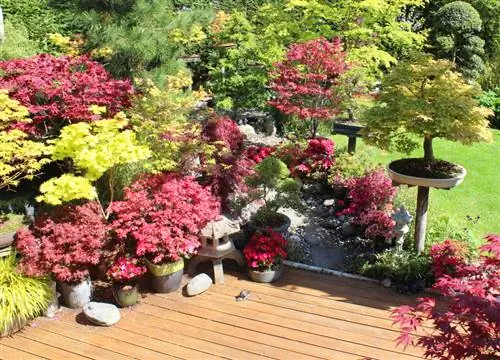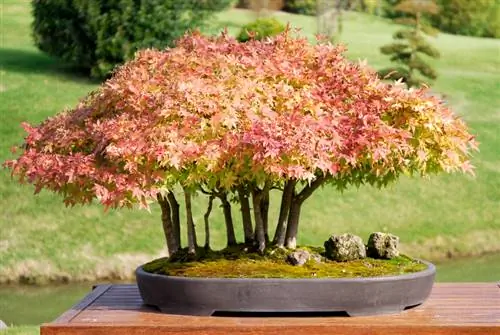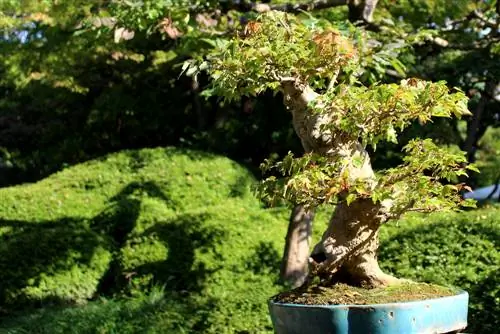- Author admin [email protected].
- Public 2023-12-16 16:46.
- Last modified 2025-01-23 11:20.
The Japanese maple - which in this case primarily includes the type "Japanese Japanese maple" (Acer palmatum) - is the ideal bonsai for beginners, and the beautiful ornamental tree is also traditionally cultivated as such in Japan. The Japanese maple is suitable for different styles and designs, whether as a single tree, double or multiple trunks or even a forest.
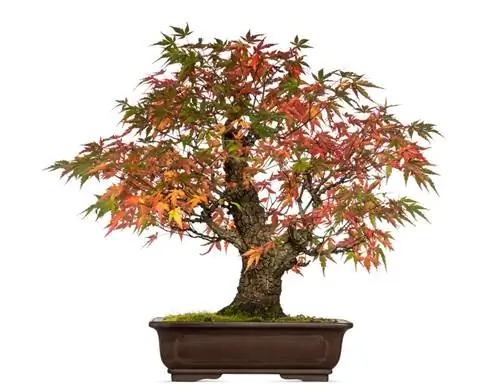
How do you care for a Japanese maple bonsai?
A Japanese maple bonsai needs a partially shaded, wind-protected location, nutrient-rich, permeable substrate, regular watering without waterlogging and organic fertilizer. Prune carefully in autumn, wire in June and overwinter frost-free at a maximum of 6°C.
Location
The Japanese maple is quite demanding in terms of location: on the one hand, it needs a lot of light for strong shoots and intense autumn color, but on the other hand, many of the approximately 500 cultivated varieties cannot tolerate direct sun. For this reason, you should place the tree in a sunny place in spring and autumn (but avoid the midday sun!) and offer it a partially shaded spot in summer. The location should also be protected from wind, as the Japanese maple reacts to strong winds with brown leaf tips.
Substrate and repotting
The substrate should be as loose, permeable, nutrient-rich and slightly moist as possible. A sandy loam soil is ideal, which you can mix yourself from humus soil, Akadama (€12.00 on Amazon) (a dimensionally stable, fired clay granulate) and a fine-grained mineral substrate (e.g. Lavalite). Repotting is best done every one to two years. Older specimens aged around 10 years only need to be repotted every five years.
Watering and fertilizing
Although the Japanese maple likes it slightly moist, it cannot tolerate waterlogging or strong fluctuations in water. It will most likely react to constantly changing dryness and wetness with brown leaf tips. It is better to let the bale dry slightly and then water it moderately. If possible, leaves and shoots should not be wetted; this only increases the risk of a fungal infection. Otherwise, the tree is supplied with an organic fertilizer approximately every two weeks between April and August.
Cutting and wiring
When it comes to cutting, the Japanese maple is a difficult candidate because, like almost all maples, it tends to bleed heavily. Pruning also increases the risk of a fungal infection, to which the maple is unfortunately very susceptible. Therefore, any necessary pruning should be carried out in autumn if possible - when the sap pressure is no longer quite as great. Sick and dead shoots can be removed in spring. Cuts should always be closed. A leaf cut or tweezing is possible at any time, wiring takes place in June.
Tip
Although the Japanese maple is considered to be very hardy, it can suffer frost damage in the flat bonsai pots. Therefore, frost-free wintering at a maximum of six degrees Celsius is recommended.

